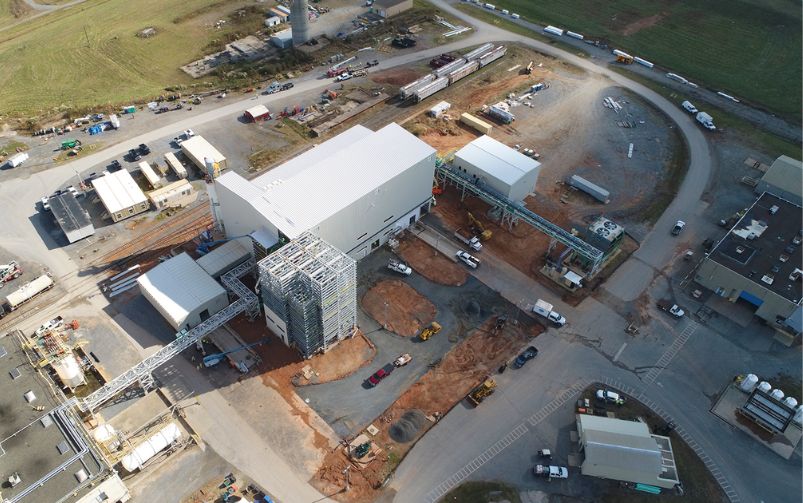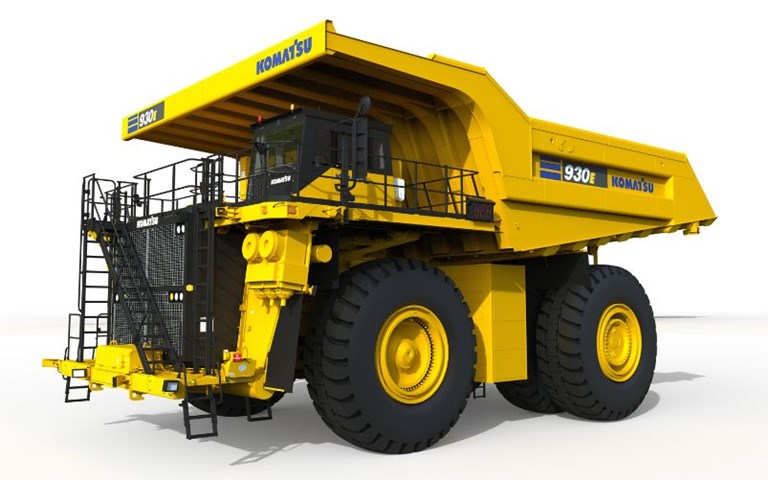The Komatsu 930E mining truck will be adapted with GM’s Hydrotec power cubes. Courtesy of Komatsu.
General Motors and Komatsu will work together to develop a hydrogen fuel cell power module for Komatsu’s 930E electric drive mining truck.
The haul truck has a nominal payload of about 290 tonnes and an operating weight of over 500,000 kg.
“Mining trucks are among the largest, most capable vehicles used in any industry,” said Charlie Freese, executive director of GM’s Global Hydrotec business, in a joint statement from the two companies. “We believe hydrogen fuel cells are best suited to deliver zero emissions propulsion to these demanding applications.”
Since the expansion of the Electric Vehicle and Alternative Fuel Infrastructure Deployment Initiative (EVAFIDI) in Canada, which provides funding to establish hydrogen refuelling sites, some companies are looking to hydrogen fuel cell vehicles (FCVs).
Hydrogen fuel cells can store a large amount of energy and be refueled in minutes, which fuel cell proponents say makes them preferable to electric vehicle batteries in certain cases, which are heavy and require sufficient time to charge.
Komatsu and GM stated in their joint statement that since hydrogen-powered technology is lightweight and refuels quickly, it is an ideal alternative to electrifying mining vehicles traditionally powered by diesel engines.
How it works
The first prototype is projected to be tested by the “mid-2020s” at Komatsu’s Arizona Proving Grounds using over two megawatts of Hydrotec power cubes, a hydrogen propulsion product that can be used for large vehicles such as aircrafts and mining haul trucks because of its transportable and durable features.
In an email to CIM Magazine, Komatsu said that the power cubes comprise two main components, a fuel cell stack made up of hundreds of individual cells, and the “balance of the power plant, which includes the compressor, H2 control, power electronics, and other supporting sensors and systems.”
Excess fuel cell power can be stored to recharge the battery for future consumption.
One truck at a time
If successful, the technology has the potential to scale to operate an entire mine’s fleet. “An entire mine could be operated with hydrogen fuel cell-powered trucks,” Komatsu said in the email. “Hydrogen infrastructure such as production, distribution, storage and refueling would also need to be scaled to support the fleet, but there is no limitation on size (small to large fleets are feasible).”
Komatsu has committed to reducing its global emissions by 50 per cent by 2030 and to carbon neutrality by 2050.
The specific timeline for testing the prototype has yet to be announced.




